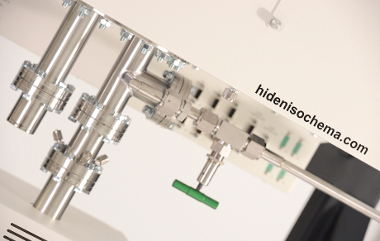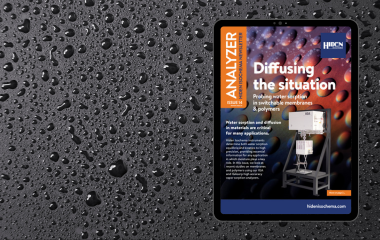Methods for Determining Vapor Sorption, Diffusivity, and Transmission Through Films
Water vapor permeation of solid media can have a lasting impact on numerous manufactured products with far-reaching implications for various industrial and pharmaceutical sectors. There are two key points of interest with regards to the transport of water vapor. The first is preventing ingress of water vapor and product protection. The second is almost the opposite the first. Some applications require a controlled release of water vapor.

This blog post will explore vapor sorption, transmission, and diffusivity in further detail:
Vapour Transmission Rate
Vapour transmission is a measure of how vapor molecules diffuse through solid media; whether they diffuse within the solid or through the pore structure of the material. The former is termed absorption and the latter is known as adsorption.
The permeation or transmission rate is dependent on three parameters:
- The solid dimensions
- Temperature
- Concentration gradient
A concentration gradient will always exist if the solid is not at equilibrium. This means that there needs to be a difference in the concentration of molecules across the solid. There are two experimental methods described here that can achieve a concentration gradient.
Direct Vapour Transmission Rate Determination
This method uses the film to seal a desiccant inside an aluminum container. If the humidity inside and outside of the container is not the same, then the water vapor will diffuse through the film.
This container is placed within the IGAsorp which is programmed to simulate relatively high humidity conditions (approximately 80% RH). The rate of transfer can then be determined by the periodic weighing of the container and is commonly expressed as the moisture vapor transmission rate (MVTR):
MVTR= (weight change (µg)x thickness (cm))/(Area (〖cm〗^2 )x time (hours))
As the vapor permeates through the film, there will be a linear trend as a steady state is reached with a net rate of transfer. MVTR can be determined from weight changes as small as 10 µg and the measurement can be easily repeated at different operating conditions.
Simultaneous Vapour Sorption-Diffusivity Determination
This method exposes all surfaces of the film to the same humidity, unlike the previous method, where each side of the film is exposed to a different humidity. This means that the concentration gradient is now from the center to the surface of the film.
Again, this method differs from the direct method as the concentration gradient is not linear. In fact, there is a maximum gradient when the humidity is changed and this then reduces down to zero as it approaches equilibrium.
The rate of transfer is determined by the chemical diffusion coefficient and the concentration gradient. The measurement of the transmission rate, therefore, does not discriminate between these two properties.
Vapour Sorption, Diffusivity, and Transmission Analysis with Hiden Isochema
The IGAsorp dynamic vapor sorption (DVS) analyzer is suitable for rapid and precise analysis of the vapor sorption characteristics of organic and inorganic media. With an ultra-sensitive microbalance used to assess minute changes in sample mass due to humidity, temperature, and time, the IGAsorp is uniquely suited to perform both direct transmission rate and simultaneous vapor sorption-diffusivity analysis.
Hiden Isochema is a world-leader in the supply of cutting-edge measurement instrumentation for material characterization. If you would like any more information, please do not hesitate to contact us.


